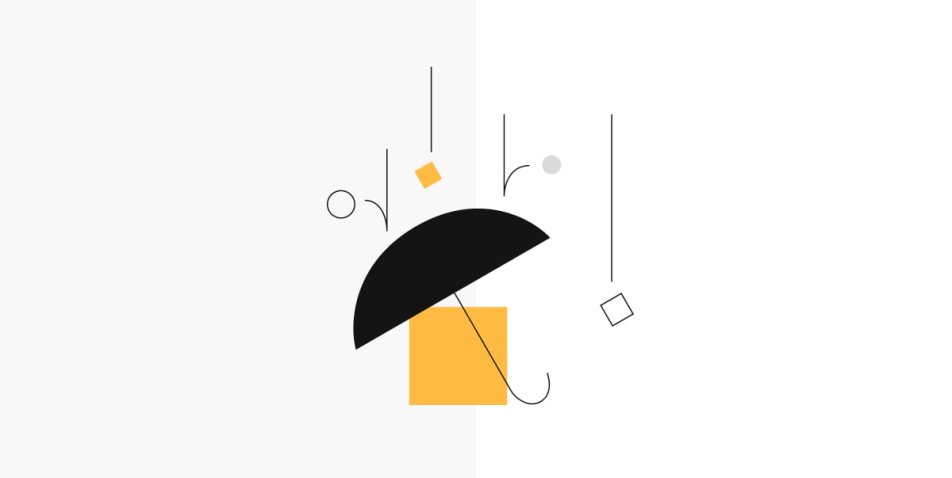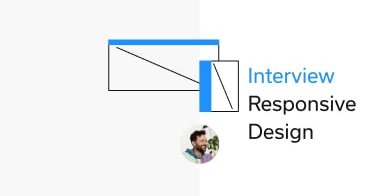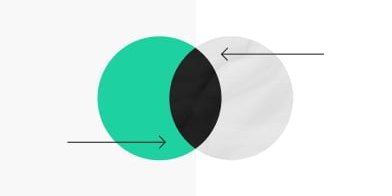Branding must be lived – externally as well as internally. Thorsten Moser talks about brand development for start-ups and established companies.
Hi Thorsten, you are the second owner and managing director of Boana alongside Johannes and you have focused on branding for digital products. Is that correct?
Yes, I've been working in the creative field for 18 years and actually come from brand development and strategy. And also from an advertising background. Over the years, it became clearer how much space is occupied by digital products and services and what opportunities that implies. Five years ago, I started Boana with Johannes to build digital products for start-ups, SMEs and larger companies. The topic of branding – especially from the start-up sector – kept coming in as a request. Also re-branding, i.e. brand renewal or further development for companies. They have noticed that they need a different appearance for emerging channels in the course of digitalisation, or that their orientation as a company has changed. This should then also be reflected in a new branding.
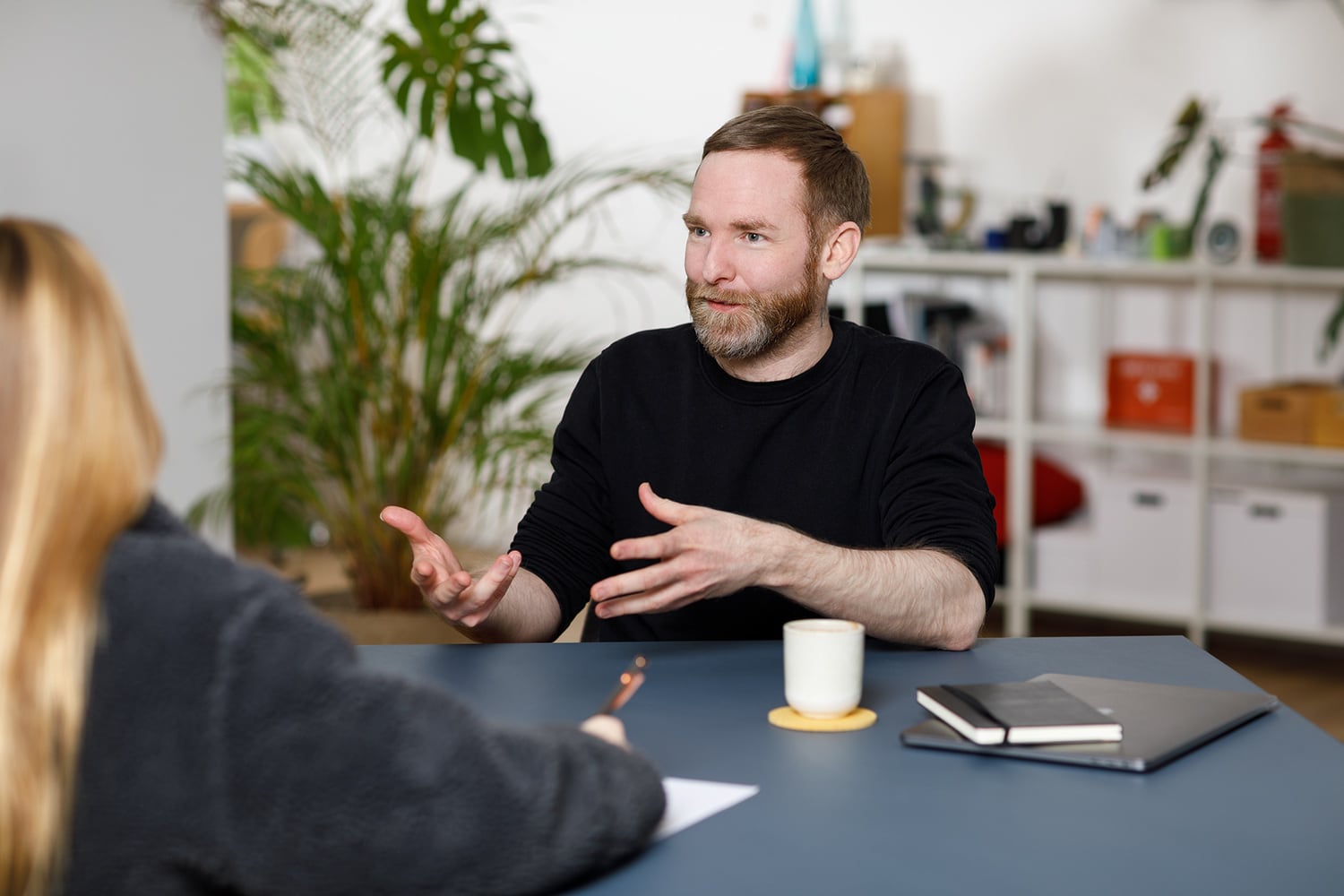
Before we dive deeper into the topic, would you give us a short definition of "branding for digital products"?
Branding is an active process, not only for digital products. With their brand, the company tells a story about what it stands for, how it wants to be perceived and how it wants to differentiate itself from other brands.
The topic is roughly divided into three areas: First, the brand story: What are my values? What do I stand for? How do I want to be perceived externally? Secondly, the brand appearance: What does my logo look like? What colour scheme am I using? What is my tonality? And thirdly, the brand strategy: On which channels do I actually reach the target group and how so? How do I want to position my messages? How can people interact with me? Where do I create brand experiences? Branding is therefore the active process of shaping and managing this. Now that would be a few more sentences for the definition ...
What are the questions you ask start-ups and also established companies who want to revitalise their brand?
That’s an interesting point: What kind of company is it that actually comes to us? We always ask: Where are you standing right now and what do you want to achieve? This applies to a start-up as well as to an established brand: What are the next steps you want to take?
We always ask: Where are you standing right now and what do you want to achieve?
After that, it soon becomes a matter of content-related questions: Do you know your target group? Are you sure that there is only one target group? You might have perceived it as a single one so far, but through research or through conversations with the company's sales team, we then realise that there are different target groups that need an individual approach based on their individual needs.
Also, questions as: Have you ever elaborated the brand values? Do you know what your promise is, what your message should be? Do you live it? Does it show on your channels?
These are the initial questions. Then we look in cooperation with the client – often in a brand workshop – what basics already exist, what still needs to be worked out and whether everyone has the same picture in mind when we examine the brand values. The primary goal is to create a common understanding of the brand.
The three main pillars of product branding
Do you realise in this phase – even without wanting to – you sometimes find yourself in a kind of management consultancy role?
Almost every time, actually! And that is a very, very exciting point. To the outside world, we are clearly perceived as a design studio, but the fact that consulting plays such a huge role and is so important is something that some clients just realise when they talk to us.
The fact that consulting plays such a huge role and is so important is something that some clients just realise when they talk to us.
The brand values have been worked out together, there is the digital product, and then it is a question of how the brand promise should be represented throughout the company. After all, there is not only the external communication – i.e. on your own website, in the social media channels, in advertising. But you should also ask yourself: How do I as a company actually communicate with my employees? Have they internalised the brand? Do we also live the values internally and what does that mean for our processes? Do we have to change them? If, for example, I represent transparency to the outside world, then the question arises: do I also live this internally? Do I as a company make my processes transparent for my employees and also my decisions at the executive level? Do I remain in silo thinking or do the different areas work together, exchange ideas and cross-fertilise each other? Do they support each other in this common goal of bringing the brand values and product promise to life? What about when it comes to people applying to work for me? Do I greet them with the same transparency that I live in my digital product?
So here we realise very quickly that companies first have to internalise what all this actually means. And what that implies in restructuring their own processes. We see enormous added benefits emerging with clients who also implement their values in their internal processes.
We see enormous added benefits emerging with clients who also implement their values in their internal processes.
This includes not only solving user problems, but also the fact that everything – from the service staff to the onboarding process of a new employee – reflects the same high quality that the company has given itself in the brand values. It also reflects in the improvement of customer ratings, the increase of customer satisfaction, the longer lasting customer loyalty and the decrease of employee turnover. The company then is coherent in itself, values are practised, people perceive this and are perceived accordingly as human beings. It may sound a bit abstract, but it means that as an employee I feel a completely different bond with my brand and accordingly adopt these brand values into my everyday work. This can be an adapted or an initial process or a rethinking in the management. Each strengthens the company at its core and thus also the product and ultimately the turnover. This is a very exciting process to accompany.
Does that mean your clients get much more than they expected at the beginning?
Yes, many of them don't expect that. And when you as a client think of branding, you might think of a new logo, a new campaign or fresh colours. But you don't initially see the change that a new branding implies, externally as well as internally. And how many levels and touchpoints it can involve.
Every interaction a company might have with a customer is a brand perception. And this can be steered and influenced.
Every interaction that a company might have with a customer is a brand perception. It can be steered and influenced, and of course it goes beyond logo, colours and beautiful pictures. It means much more, such as: How do I write? How do I sound? How do I communicate with a customer, for example? How quickly do I reply to an enquiry? What does it mean for my internal processes if I want to answer really quickly? How do my employees have to be trained? How much freedom do I allow them to design these responses?
We often receive requests for a new branding and through the collaboration the company realises that the topic should be thought of in a bigger way after all. But if I want to fill my brand with life, it definitely touches many different areas of my company.
In one of Boana’s blog articles you talk about the fact that brand development does not necessarily have to take place in one step, but can also be multi-stage. Can you describe these different stages?
In the course of the last few years, we have seen that – especially with start-ups – one question is quite common: How can I quickly create a basis in order to enter the market? To be able to market my product actively and to be perceived as a company with my offer. And so the idea came up to say: Branding is also an iterative, adaptive process.
Branding for the start implies: What do I need right now to expose my product to the market?
Branding for the start implies: What do I need right now to expose my product to the market? Then you move on to find out: Does my message work? At the beginning, it consists of the brand appearance and the tonality. We then fundamentally define the brand values and a claim for the first uniform appearance. And if necessary, we define in collaboration with the client where all this can take place: Which channels really make sense at the beginning? And which ones are nice-to-have? This contains the branding for the start.
An iterative approach to branding for digital products
From there on you continue: What else do I need? Do I need to think in terms of separate landing pages for different target groups? Do I want to launch campaigns on different channels to acquire new customers? Do I want to bring my brand experience – we talk about "branded moments" – into my digital product? Are there small interactions? Is there something that makes my brand even more tangible in my app or my software? All these stages can be added gradually when the company reaches the appropriate point.
Is there a Boana case to demonstrate such a step-by-step expansion of a brand?
We did a re-branding for our client Kerberos. The background: The company works in the field of money laundering prevention. The legislator has issued regulations to prevent money laundering, to which many different target groups are bound. Together with Kerberos we digitised this process. Up to now, the communication was done via a lot of very complex forms and had a very pointed target group – mainly in the gambling sector. Kerberos was also perceived as a legal consultancy and not (yet) as a provider of a digital service. The existing brand of our client was a good fit for the existing environment, but they wanted to reposition themselves – with a new digital product – and target new audiences.
This implied looking at: Which target groups are there? Which of them does the client want to address? What are their needs? Where do they stand in terms of their understanding? What problems would they like to be solved? And how can we reach them? In which language do we have to speak? What does the brand have to deliver so that customers trust us to communicate sensitive data with Kerberos?
This was a three-stage process. First we adapted the existing branding to the new digital orientation, then we implemented the new tonality and language in line with the target groups. And then, in step three, we determined which channels could be used to reach each target group with its needs in order to establish the product and make it well known. In doing so, we have created a basis on which the client is able to continue developing its brand independently in order to meet its customers future needs.
So now you have already answered the last question on my list – about addressing the target group …
Well, I have another case: our client BuchhaltungsButler, who offers accounting software in a very competitive market. BuchhaltungsButler initially had a very broad target group and an equally broad approach, while the competitors had already discovered sectors or sub-sectors for themselves in which they are particularly good.
Together with the team of BuchhaltungsButler we took a look to find out: Who are their existing customers? Is there potential for expansion? What other, exciting target groups are there? What is actually their software’s core promise and what differentiates them from other providers?
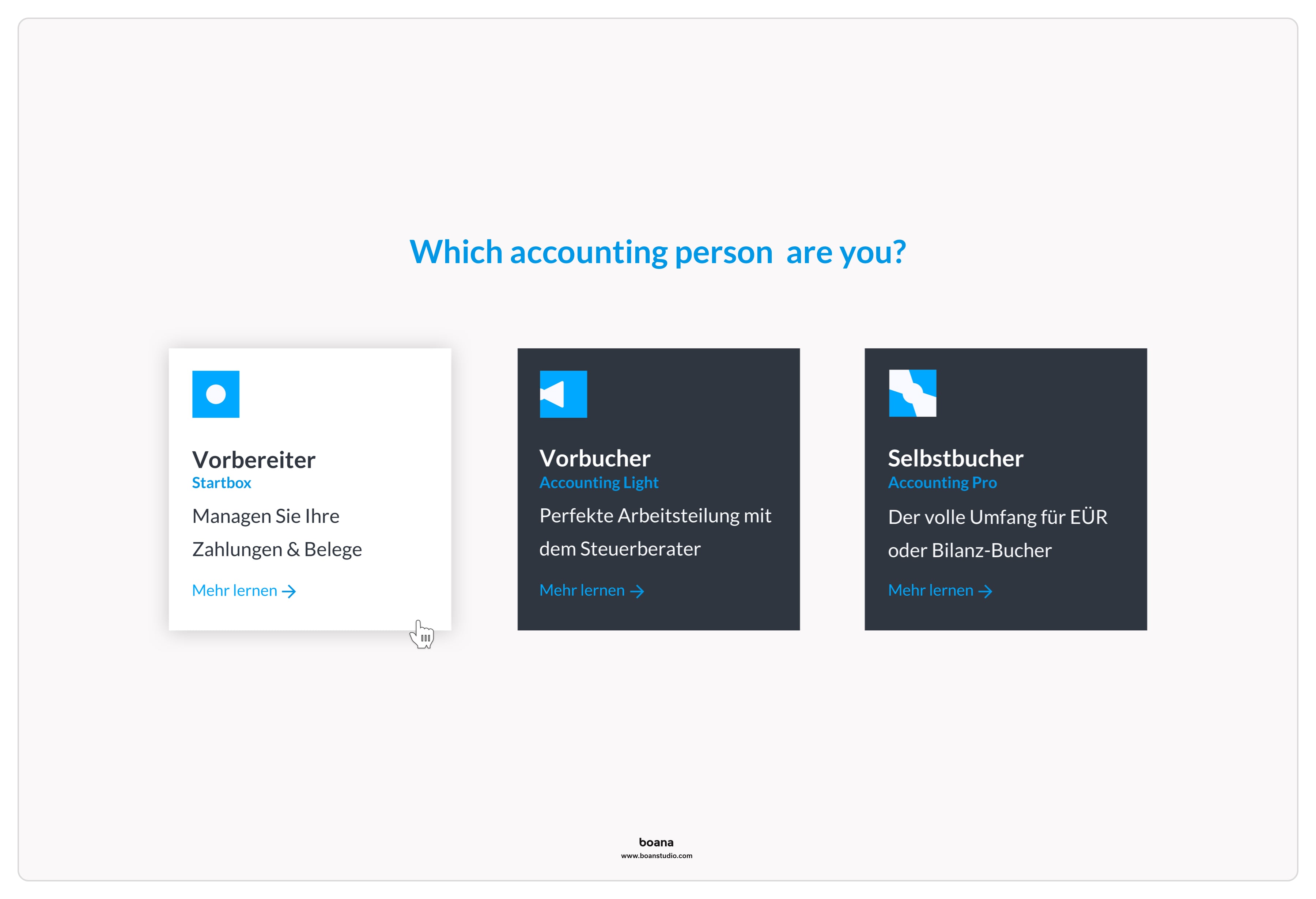 The cleary clustered addressing of the target groups led to a higher conversion rate.
The cleary clustered addressing of the target groups led to a higher conversion rate.
Once this was defined and clustered, we redesigned the BuchhaltungsButler website to explicitly bring the core USP to the forefront and address three different target groups. Subsequently, we considered the main channels for their communication in order to be able to reach these target groups with the new message, i.e. with a clear promise.
All of this has led to good growth for our client.
All of this has led to good growth for our client. The increase resulted out of the clear approach that we developed together to position them optimally on the market. In a nutshell, this implied:
- Know your target groups.
- Know what their needs are.
- Identify your niche in the market.
- Deliver your message and fulfil the promise.

